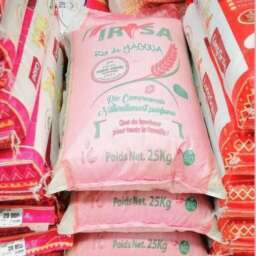(Business in Cameroon) – Maize production in Cameroon’s Littoral region plummeted to 190,500 metric tons in 2023, marking the lowest volume recorded in this part of the country since at least 2019. Official data from the National Institute of Statistics (INS) statistical yearbook for the region, recently released, indicates that annual production of the cereal had consistently exceeded 200,000 tons since that year.
Figures from the national statistics office highlight the Moungo department’s dominance in the Littoral region’s maize output. Known for its fertile volcanic soil, Moungo alone accounted for 82.4% of the region’s maize production in 2023, reaching 156,958 metric tons. This marks a decline from just over 200,000 tons in 2022 and an average of 190,000 tons from 2019 onward.
A detailed analysis of the INS data further reveals that Moungo’s 2023 maize production was six times higher than that of Sanaga Maritime, another department in the region. This is notable given that Sanaga Maritime dedicated roughly the same area to maize cultivation that year (20,112 hectares compared to Moungo’s 20,810 hectares).
Furthermore, the newly published INS data shows that Moungo maintains its lead in maize production despite its maize-growing areas shrinking by more than 71% since 2019. Official sources indicate these areas, which averaged 70,000 hectares between 2019 and 2021, declined to 29,360 hectares in 2022 and further to just 20,810 hectares in 2023.
While the INS yearbook for the Littoral region does not explain the sharp drop in cultivated areas in Moungo, the sustained high production may be attributed to farmers’ adoption of improved seeds, which offer significantly higher yields per hectare.
Maize stands as the third most produced food crop in Cameroon, following cassava and plantain, according to a study on the “strategic positioning of the cereal-based product manufacturing sector in Cameroon.” Presented in August 2021 by the Enterprises Upgrading Office (now part of the National Investment Corporation-SNI), the study also identifies maize as the most consumed cereal in the country, “far ahead of rice and sorghum.”
In 2020, the Ministry of Agriculture reported a national production shortfall of approximately 200,000 metric tons, with output reaching 2.8 million tons against a demand of around 3 million tons.
The aforementioned study indicates that 58% of local maize production is for self-consumption. The highest consumers of maize are found in Cameroon’s northern regions, where cereals are a dietary staple. Specifically, inhabitants of the North, Far North, and Adamawa regions consume an average of 80 kg of maize per person annually in rural areas, compared to 60 kg in urban areas. In southern Cameroon, excluding the Northwest and West regions where consumption reaches 50 kg per person per year, annual per capita consumption ranges between 6 and 8 kg.
Brice R. Mbodiam



































